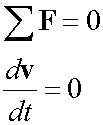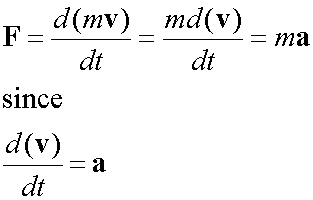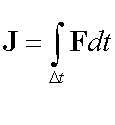Sir Isaac Newton's Laws of Motion
First published in 1686
Amazon : Philosophiae Naturalis Principia Mathematica
As an Amazon Associate I earn from qualifying purchases.
First Law of Motion
aka The Law of Inertia
An object at rest will remain at rest unless acted on by an unbalanced force. An object in motion continues with constant velocity in the same direction unless acted upon by an unbalanced force.

In every material universe, the motion of a particle in a preferential reference frame Φ is determined by the action of forces whose total vanished for all times when and only when the velocity of the particle is constant in Φ. That is, a particle initially at rest or in uniform motion in the preferential frame Φ continues in that state unless compelled by forces to change it.
Newton's first and second laws are valid only in an inertial reference frame. Any reference frame that is in uniform motion with respect to an inertial frame is also an inertial frame, i.e. Galilean invariance or the principle of Newtonian relativity
Second Law of Motion
The second law states that the rate of change of momentum of a body is directly proportional to the force applied, and this change in momentum takes place in the direction of the applied force.
Momentum (p) is velocity times mass.
 so
so 

This is commonly remembered as F = ma
Impulse (J) occurs when a force acts over a time interval.
so Impulse = Force x Time

Impulse is the change in momentum.
Third Law of Motion
All forces between two objects exist in equal magnitude and opposite direction: if object A exerts a force FA on object B, then B simultaneously exerts a force FB on A, and the two forces are equal in magnitude and opposite in direction: FA = −FB .
Here, FA is the action and FB is the reaction.
